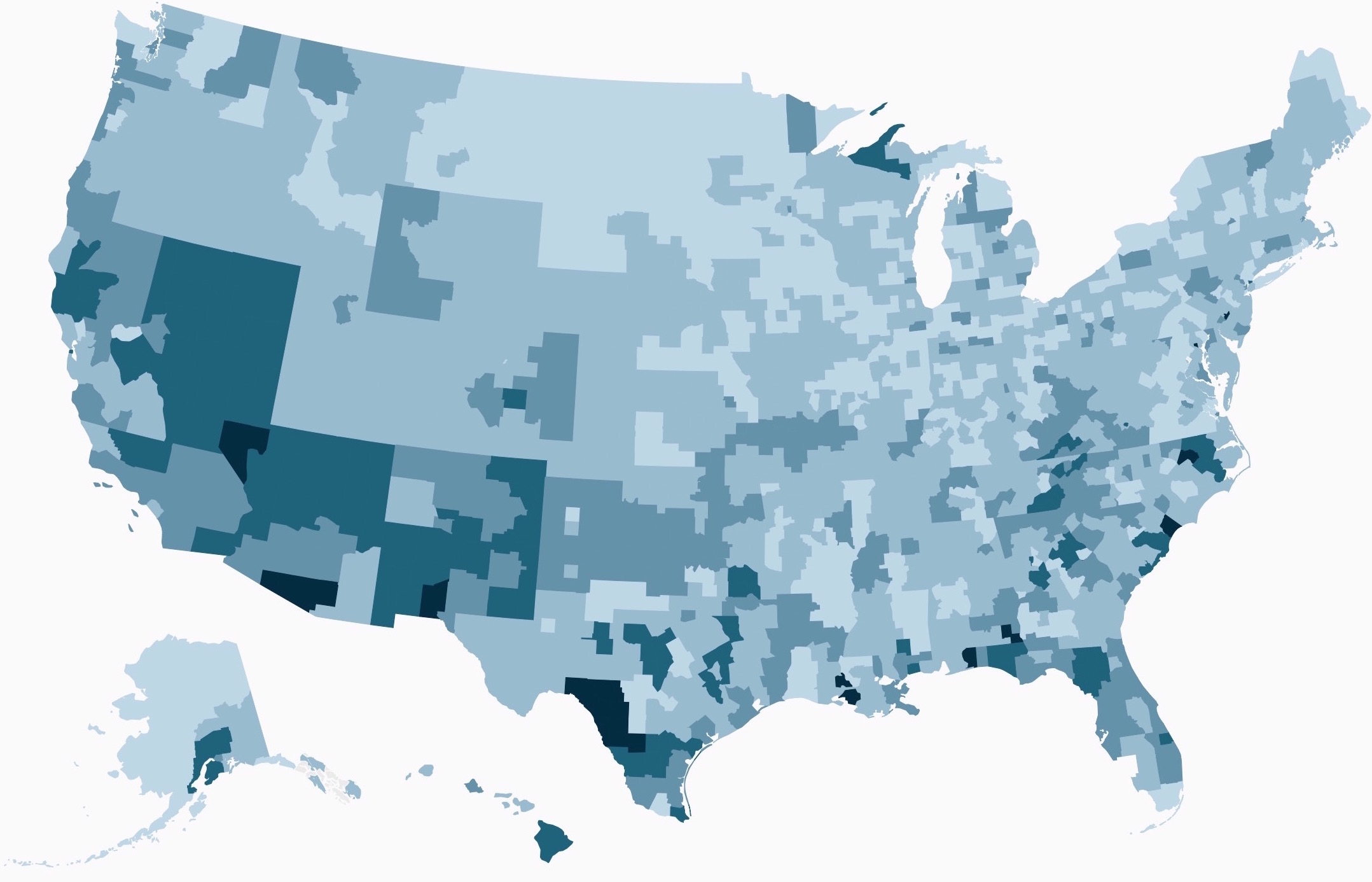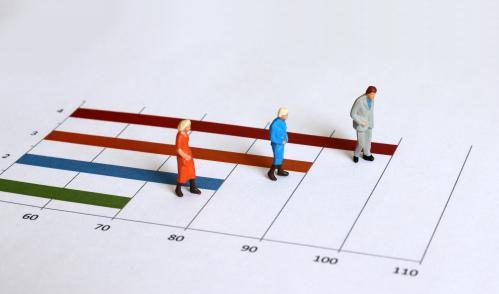In 2015, Princeton Professors Anne Case and Angus Deaton made global headlines after documenting a shocking rise in the proportion of white non-Hispanic Americans dying in middle age.
This year, as part of the Spring 2017 edition of the Brookings Papers on Economic Activity, Professors Case and Deaton are following up on that research to further investigate the rise and its causes, examining midlife mortality rates of white non-Hispanics in the U.S. by geography, education, birth cohort, and more. You can read the full paper here.
Dividing the country into 1,000-plus regions, the authors find that the rate of “deaths of despair” (deaths by drugs, alcohol, and suicide) in midlife for white non-Hispanics rose in nearly every part of the country and at every level of urbanization—from deep rural areas to large central cities—hitting men and women similarly.
In 2000, the epidemic was centered in the southwest. By the mid-2000s it had spread to Appalachia, Florida, and the west coast. Today, it’s country-wide.
“Deaths of despair” for white non-Hispanics, 2000 and 2014
Ages 45-54, by couma*
*A blend of counties and PUMAs. See full paper for more explanation.
“Deaths of despair” in midlife rose most dramatically for white non-Hispanic Americans with a high school degree or less—a pattern that diverges sharply from overall rates of “deaths of despair” in midlife in other rich countries. The chart below compares “deaths of despair” in midlife for white non-Hispanics in the U.S. with overall “deaths of despair” (all races combined) in midlife in other rich countries over time.

Taking a closer look at the increase within the U.S., the authors find that “deaths of despair” rates for men and women with a high school degree or less are rising in parallel, and much faster than the rates for men and women with a 4-year college degree or more.

The authors also look at “deaths of despair” by birth cohort (labeled by the year of birth). The chart below shows that the rate of “deaths of despair” for white non-Hispanics born in 1975 is much steeper than the rate for those born in 1935.
What’s more, the increases in deaths of despair are accompanied by a measurable deterioration in economic and social wellbeing, which has become more pronounced for each successive birth cohort. Marriage rates and labor force participation rates fall between successive birth cohorts, while reports of physical pain, and poor health and mental health rise.

When combined with a slowdown in progress against mortality from heart disease and cancer—the two largest killers in middle age— since the late 1990s, the increase in “deaths of despair” has resulted in overall midlife mortality rates (death by any cause) for working class white Americans overtaking those of other minority groups for the first time.

To learn more about the findings from the new paper, read “Mortality and morbidity in the 21st century” from Anne Case and Angus Deaton.






Commentary
Working class white Americans are now dying in middle age at faster rates than minority groups
March 23, 2017